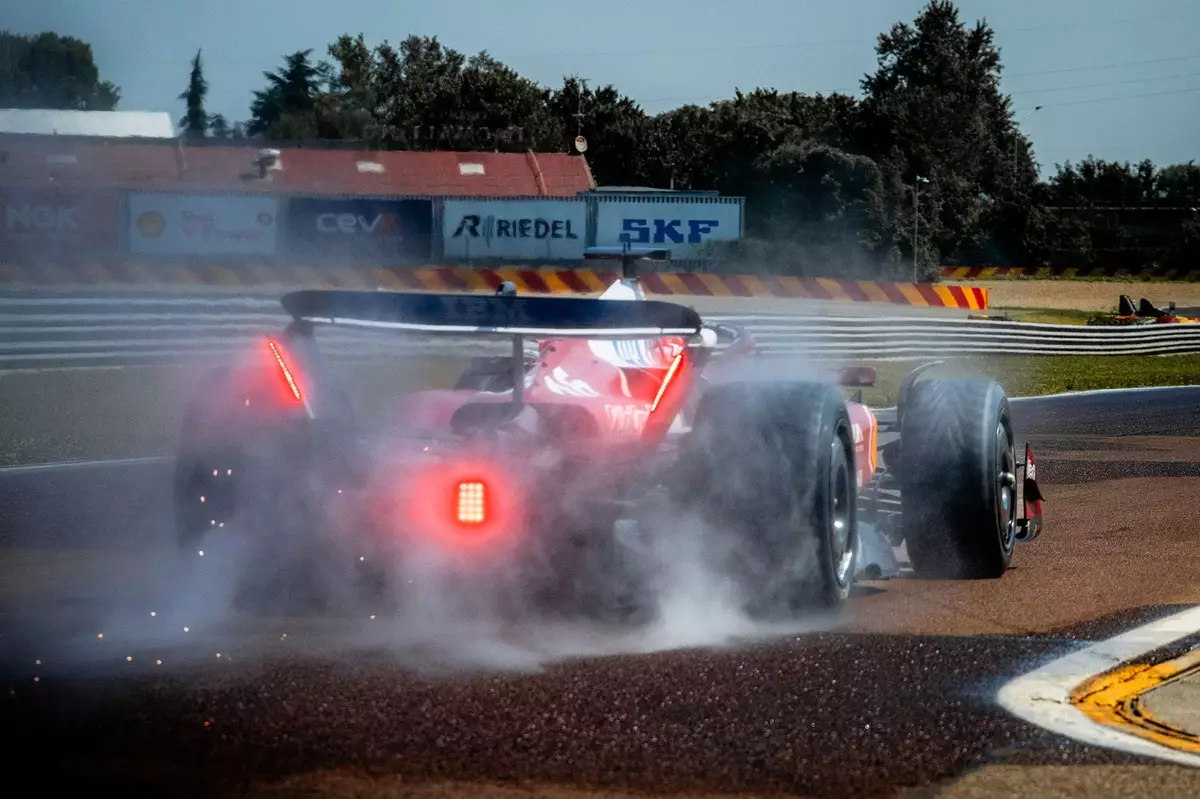In the high-octane world of Formula 1, where every millisecond counts, wet-weather racing presents a unique challenge that can derail even the most seasoned drivers. Recent tests have shown that Pirelli’s blue-sidewalled wet tyres are capable of displacing an astonishing 85 litres of water per second at racing speeds. However, in practice, these tyres seldom get the opportunity to showcase their prowess as adverse weather often leads to race stoppages, piquing fans’ interests more for their rarity than for their performance. Events like the chaotic Belgian Grand Prix of 2021 and the Brazilian race in 2022 epitomize the struggles teams face when wrestling with wet conditions, leading many drivers to prefer the Intermediate tyres over their full-wet counterparts.
It’s a paradox of motorsport; while we expect sophisticated engineering to solve problems, sometimes it seems to complicate them even further. The sight of drivers gingerly navigating the track on intermediates, reluctant to switch to wet tyres that have been criticized for their quick degradation, raises questions about the efficacy of current designs. Reports suggest that even in less-than-ideal conditions, the wet tyre sees limited use, highlighting a significant gap in Pirelli’s strategy for maximising performance in inclement weather.
Innovations on the Horizon
As the sport evolves with the introduction of cutting-edge technology, Pirelli acknowledges that a total overhaul of wet tyre design is essential. According to Mario Isola, Pirelli’s motorsport manager, the goal is to bring the performance of wet tyres closer to that of intermediates. The implications are enormous; imagine a scenario where the transition from slicks to wet compounds occurs seamlessly, without sacrificing valuable track position. The hope is to create a more ‘usable’ wet tyre—one capable of performing excellently in a broad range of wet conditions where visibility remains a challenge for drivers.
However, achieving this is not a straightforward task. Pirelli recently conducted a test at Ferrari’s Fiorano circuit that involved using ‘mule cars’ to simulate the next-generation car loadings, but this approach comes with its own set of limitations. Real-world applications of these theoretical designs often challenge engineers to adapt and innovate on the fly, involving lengthy development periods and meticulous fine-tuning of materials and tread patterns.
The Pursuit of the Perfect Crossover Point
Notably, finding the perfect ‘crossover point’ between wet and intermediate tyres is crucial. Traditionally, the transition occurs when lap times dip to 112% of the dry pace—a threshold the previous-generation wet tyres could only meet at 120%. Recent amendments have seen some improvements, with the new specification wet tyre showing a crossover point around 118%, close to but not hitting Pirelli’s target benchmark of 116%. This suggests that while progress is being made, there’s still a long way to go.
Pirelli’s forward-thinking vision is geared towards remedying these historical shortcomings before the introduction of next-generation cars in 2026, and that vision involves a distinct push towards a more refined wet-weather experience. The future lies in integrating feedback from drivers and teams to create tyres that not only cope with wet conditions but thrive in them. Continued testing and validation are essential, especially as F1 races become increasingly unpredictable and competitive.
Looking Ahead: Significance and Impact
As the countdown to 2026 ticks closer, the significance of these innovations cannot be overstated. The adaptation of wet tyres could not only enhance the performance during challenging weather but may fundamentally alter the strategy employed by teams worldwide. The stakes are high; teams must strike a balance between innovation and reliability while addressing the concerns of visibility and performance that have plagued the sport in wet conditions. If Pirelli succeeds, we might see a dramatic shift in how wet races are approached, providing drivers and teams with the tools to not just survive the rain, but indeed, to master it.
Racing, after all, is not just about speed; it’s about strategy, adaptation, and the relentless pursuit of excellence. The era of resilient wet tyres that truly perform under pressure may not be far away, elevating the excitement of the sport and ensuring that Formula 1 remains at the forefront of innovation in motorsport.

